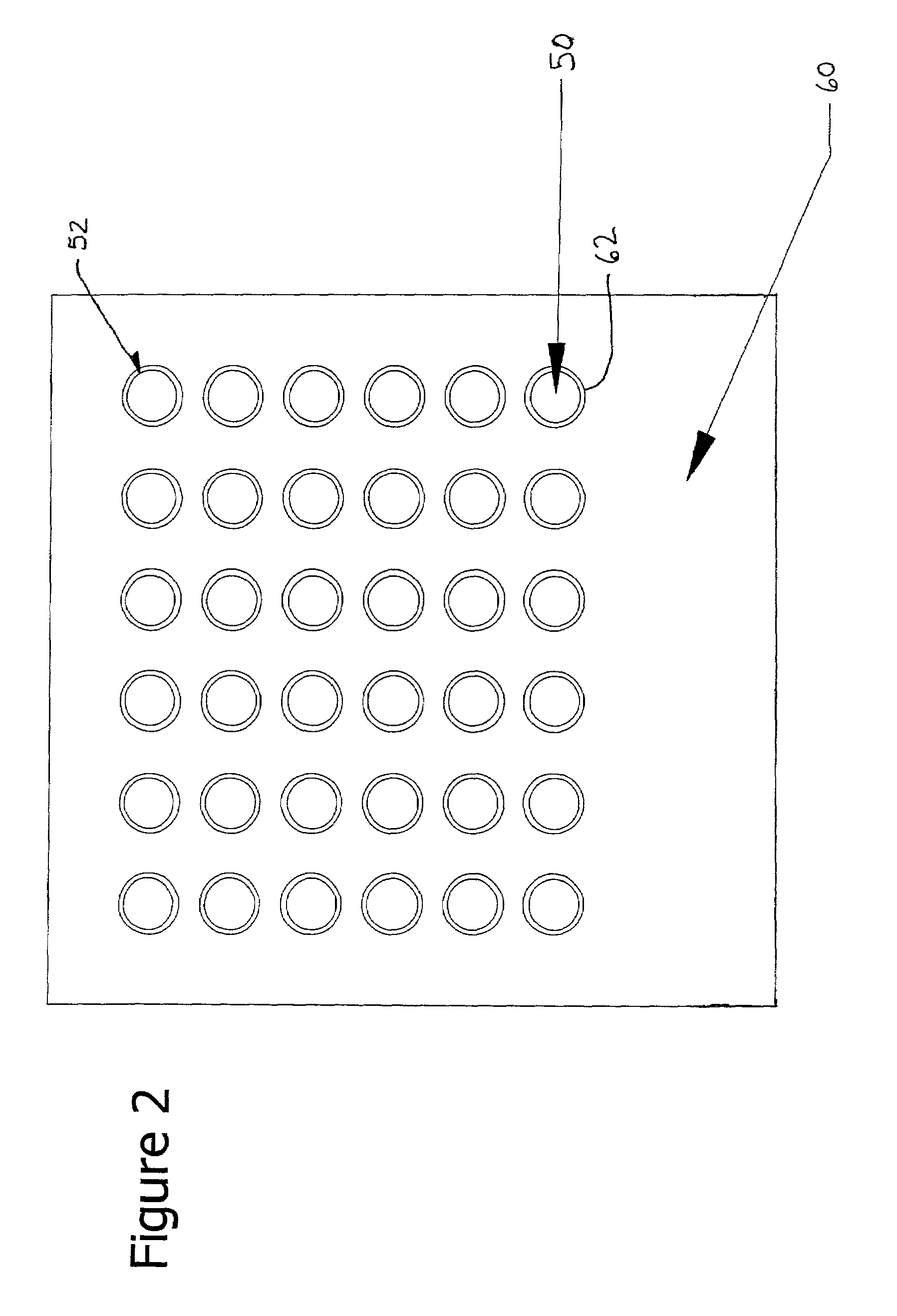Method and apparatus for minimizing adverse effects of thermal expansion in a heat exchange reactor
a technology of heat exchange reactor and thermal expansion, which is applied in the direction of lighting and heating apparatus, gas-gas reaction process, laminated elements, etc., can solve the problems of difficult provision of features in tubular array heat exchange reactors, particularly difficult thermal stresses, and thermal stresses, so as to reduce thermal stresses, increase the strength of tubes, and enhance corrosion resistance
- Summary
- Abstract
- Description
- Claims
- Application Information
AI Technical Summary
Benefits of technology
Problems solved by technology
Method used
Image
Examples
Embodiment Construction
[0024]FIG. 1 depicts the core of a tubular heat exchange reactor 10. The reactor 10 includes a housing 20 that encloses a plurality of tubes 50 that are mechanically connected at one end to a header plate 34 of a first manifold assembly 30 and at an opposing end to a header plate 44 of a second manifold assembly 40. The first manifold assembly 30 is provided with a first fluid inlet port 32 and the second manifold assembly is provided with an exit port 42. The first fluid flows through inlet 32 to the first manifold assembly 30, the first manifold assembly 30 distributes through the first fluid to the plurality of tubes 50 to the second manifold assembly 40, and the first fluid then flows through exit 42. The first fluid flowing through the tubes 50 is in heat exchange contact with at least one second fluid that is provided within the housing 20 and is in contact with an outer surface 51 (labeled in FIG. 5) of the tubes 50.
[0025]The heat exchange reactor 10 includes baffles 60 loose...
PUM
| Property | Measurement | Unit |
|---|---|---|
| outer diameters | aaaaa | aaaaa |
| temperature | aaaaa | aaaaa |
| temperature | aaaaa | aaaaa |
Abstract
Description
Claims
Application Information
 Login to View More
Login to View More - R&D
- Intellectual Property
- Life Sciences
- Materials
- Tech Scout
- Unparalleled Data Quality
- Higher Quality Content
- 60% Fewer Hallucinations
Browse by: Latest US Patents, China's latest patents, Technical Efficacy Thesaurus, Application Domain, Technology Topic, Popular Technical Reports.
© 2025 PatSnap. All rights reserved.Legal|Privacy policy|Modern Slavery Act Transparency Statement|Sitemap|About US| Contact US: help@patsnap.com



